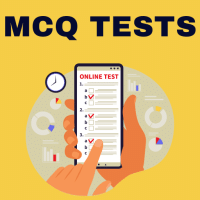Humanities/Arts Exam > Humanities/Arts Questions > Read the case study given below and answer t...
Start Learning for Free
Read the case study given below and answer the questions that follow:
Rural marketing centres cater to nearby settlements. These are quasi-urban centres. They serve as trading centres of the most rudimentary type. Here personal and professional services are not well-developed. These form local collecting and distributing centres. Most of these have mandis (wholesale markets) and also retail areas. They are not urban centres per se but are significant centres for making available goods and services which are most frequently demanded by rural folk. Periodic markets in rural areas are found where there are no regular markets and local periodic markets are organised at different temporal intervals. These may be weekly, bi-weekly markets from where people from the surrounding areas meet their temporally accumulated demand. These markets are held on specified dates and move
from one place to another. The shopkeepers thus, remain busy on all the days while a large area is served by them.
Q. An authorised public gathering of buyers and sellers of commodities at an appointed place at regular intervals is known as:
- a)Social market
- b)Periodic market
- c)Public market
- d)Special market
Correct answer is option 'B'. Can you explain this answer?
Most Upvoted Answer
Read the case study given below and answer the questions that follow:...
Periodic markets, which continue to be an important element of rural retail trade in many parts of the world, meet periodically at specific locations with set schedules, separated by market-less days or by days with limited trading activities.
Free Test
| FREE | Start Free Test |
Community Answer
Read the case study given below and answer the questions that follow:...
Understanding Periodic Markets
Periodic markets are essential components of rural marketing, providing a structured environment for trade. In the case study provided, periodic markets are described as gatherings of buyers and sellers that occur at specific intervals, serving the needs of rural communities.
Definition of Periodic Markets
- Authorized Gathering: Periodic markets are recognized as legitimate trading events where buyers and sellers congregate.
- Regular Intervals: These markets are held consistently, often weekly or bi-weekly, allowing for predictable shopping opportunities for the local population.
Characteristics of Periodic Markets
- Location and Mobility: These markets are not fixed; they move from one location to another, ensuring that various rural areas are served over time.
- Temporally Accumulated Demand: They cater to the accumulated needs of rural residents, fulfilling their demand for goods and services that may not be available in their immediate vicinity.
Importance of Periodic Markets in Rural Areas
- Accessibility: They provide essential access to goods and services for rural inhabitants who may not have easy access to urban markets.
- Economic Activity: These markets stimulate local economies by enabling trade and commerce in areas that lack established retail infrastructure.
In summary, the correct answer to the question about the gathering of buyers and sellers at regular intervals is option 'B' (Periodic Market) because it accurately reflects the nature of these markets as organized events that facilitate trade in rural settings.
Periodic markets are essential components of rural marketing, providing a structured environment for trade. In the case study provided, periodic markets are described as gatherings of buyers and sellers that occur at specific intervals, serving the needs of rural communities.
Definition of Periodic Markets
- Authorized Gathering: Periodic markets are recognized as legitimate trading events where buyers and sellers congregate.
- Regular Intervals: These markets are held consistently, often weekly or bi-weekly, allowing for predictable shopping opportunities for the local population.
Characteristics of Periodic Markets
- Location and Mobility: These markets are not fixed; they move from one location to another, ensuring that various rural areas are served over time.
- Temporally Accumulated Demand: They cater to the accumulated needs of rural residents, fulfilling their demand for goods and services that may not be available in their immediate vicinity.
Importance of Periodic Markets in Rural Areas
- Accessibility: They provide essential access to goods and services for rural inhabitants who may not have easy access to urban markets.
- Economic Activity: These markets stimulate local economies by enabling trade and commerce in areas that lack established retail infrastructure.
In summary, the correct answer to the question about the gathering of buyers and sellers at regular intervals is option 'B' (Periodic Market) because it accurately reflects the nature of these markets as organized events that facilitate trade in rural settings.

|
Explore Courses for Humanities/Arts exam
|

|
Question Description
Read the case study given below and answer the questions that follow:Rural marketing centres cater to nearby settlements. These are quasi-urban centres. They serve as trading centres of the most rudimentary type. Here personal and professional services are not well-developed. These form local collecting and distributing centres. Most of these have mandis (wholesale markets) and also retail areas. They are not urban centres per se but are significant centres for making available goods and services which are most frequently demanded by rural folk. Periodic markets in rural areas are found where there are no regular markets and local periodic markets are organised at different temporal intervals. These may be weekly, bi-weekly markets from where people from the surrounding areas meet their temporally accumulated demand. These markets are held on specified dates and movefrom one place to another. The shopkeepers thus, remain busy on all the days while a large area is served by them.Q. An authorised public gathering of buyers and sellers of commodities at an appointed place at regular intervals is known as:a)Social marketb)Periodic marketc)Public marketd)Special marketCorrect answer is option 'B'. Can you explain this answer? for Humanities/Arts 2025 is part of Humanities/Arts preparation. The Question and answers have been prepared according to the Humanities/Arts exam syllabus. Information about Read the case study given below and answer the questions that follow:Rural marketing centres cater to nearby settlements. These are quasi-urban centres. They serve as trading centres of the most rudimentary type. Here personal and professional services are not well-developed. These form local collecting and distributing centres. Most of these have mandis (wholesale markets) and also retail areas. They are not urban centres per se but are significant centres for making available goods and services which are most frequently demanded by rural folk. Periodic markets in rural areas are found where there are no regular markets and local periodic markets are organised at different temporal intervals. These may be weekly, bi-weekly markets from where people from the surrounding areas meet their temporally accumulated demand. These markets are held on specified dates and movefrom one place to another. The shopkeepers thus, remain busy on all the days while a large area is served by them.Q. An authorised public gathering of buyers and sellers of commodities at an appointed place at regular intervals is known as:a)Social marketb)Periodic marketc)Public marketd)Special marketCorrect answer is option 'B'. Can you explain this answer? covers all topics & solutions for Humanities/Arts 2025 Exam. Find important definitions, questions, meanings, examples, exercises and tests below for Read the case study given below and answer the questions that follow:Rural marketing centres cater to nearby settlements. These are quasi-urban centres. They serve as trading centres of the most rudimentary type. Here personal and professional services are not well-developed. These form local collecting and distributing centres. Most of these have mandis (wholesale markets) and also retail areas. They are not urban centres per se but are significant centres for making available goods and services which are most frequently demanded by rural folk. Periodic markets in rural areas are found where there are no regular markets and local periodic markets are organised at different temporal intervals. These may be weekly, bi-weekly markets from where people from the surrounding areas meet their temporally accumulated demand. These markets are held on specified dates and movefrom one place to another. The shopkeepers thus, remain busy on all the days while a large area is served by them.Q. An authorised public gathering of buyers and sellers of commodities at an appointed place at regular intervals is known as:a)Social marketb)Periodic marketc)Public marketd)Special marketCorrect answer is option 'B'. Can you explain this answer?.
Read the case study given below and answer the questions that follow:Rural marketing centres cater to nearby settlements. These are quasi-urban centres. They serve as trading centres of the most rudimentary type. Here personal and professional services are not well-developed. These form local collecting and distributing centres. Most of these have mandis (wholesale markets) and also retail areas. They are not urban centres per se but are significant centres for making available goods and services which are most frequently demanded by rural folk. Periodic markets in rural areas are found where there are no regular markets and local periodic markets are organised at different temporal intervals. These may be weekly, bi-weekly markets from where people from the surrounding areas meet their temporally accumulated demand. These markets are held on specified dates and movefrom one place to another. The shopkeepers thus, remain busy on all the days while a large area is served by them.Q. An authorised public gathering of buyers and sellers of commodities at an appointed place at regular intervals is known as:a)Social marketb)Periodic marketc)Public marketd)Special marketCorrect answer is option 'B'. Can you explain this answer? for Humanities/Arts 2025 is part of Humanities/Arts preparation. The Question and answers have been prepared according to the Humanities/Arts exam syllabus. Information about Read the case study given below and answer the questions that follow:Rural marketing centres cater to nearby settlements. These are quasi-urban centres. They serve as trading centres of the most rudimentary type. Here personal and professional services are not well-developed. These form local collecting and distributing centres. Most of these have mandis (wholesale markets) and also retail areas. They are not urban centres per se but are significant centres for making available goods and services which are most frequently demanded by rural folk. Periodic markets in rural areas are found where there are no regular markets and local periodic markets are organised at different temporal intervals. These may be weekly, bi-weekly markets from where people from the surrounding areas meet their temporally accumulated demand. These markets are held on specified dates and movefrom one place to another. The shopkeepers thus, remain busy on all the days while a large area is served by them.Q. An authorised public gathering of buyers and sellers of commodities at an appointed place at regular intervals is known as:a)Social marketb)Periodic marketc)Public marketd)Special marketCorrect answer is option 'B'. Can you explain this answer? covers all topics & solutions for Humanities/Arts 2025 Exam. Find important definitions, questions, meanings, examples, exercises and tests below for Read the case study given below and answer the questions that follow:Rural marketing centres cater to nearby settlements. These are quasi-urban centres. They serve as trading centres of the most rudimentary type. Here personal and professional services are not well-developed. These form local collecting and distributing centres. Most of these have mandis (wholesale markets) and also retail areas. They are not urban centres per se but are significant centres for making available goods and services which are most frequently demanded by rural folk. Periodic markets in rural areas are found where there are no regular markets and local periodic markets are organised at different temporal intervals. These may be weekly, bi-weekly markets from where people from the surrounding areas meet their temporally accumulated demand. These markets are held on specified dates and movefrom one place to another. The shopkeepers thus, remain busy on all the days while a large area is served by them.Q. An authorised public gathering of buyers and sellers of commodities at an appointed place at regular intervals is known as:a)Social marketb)Periodic marketc)Public marketd)Special marketCorrect answer is option 'B'. Can you explain this answer?.
Solutions for Read the case study given below and answer the questions that follow:Rural marketing centres cater to nearby settlements. These are quasi-urban centres. They serve as trading centres of the most rudimentary type. Here personal and professional services are not well-developed. These form local collecting and distributing centres. Most of these have mandis (wholesale markets) and also retail areas. They are not urban centres per se but are significant centres for making available goods and services which are most frequently demanded by rural folk. Periodic markets in rural areas are found where there are no regular markets and local periodic markets are organised at different temporal intervals. These may be weekly, bi-weekly markets from where people from the surrounding areas meet their temporally accumulated demand. These markets are held on specified dates and movefrom one place to another. The shopkeepers thus, remain busy on all the days while a large area is served by them.Q. An authorised public gathering of buyers and sellers of commodities at an appointed place at regular intervals is known as:a)Social marketb)Periodic marketc)Public marketd)Special marketCorrect answer is option 'B'. Can you explain this answer? in English & in Hindi are available as part of our courses for Humanities/Arts.
Download more important topics, notes, lectures and mock test series for Humanities/Arts Exam by signing up for free.
Here you can find the meaning of Read the case study given below and answer the questions that follow:Rural marketing centres cater to nearby settlements. These are quasi-urban centres. They serve as trading centres of the most rudimentary type. Here personal and professional services are not well-developed. These form local collecting and distributing centres. Most of these have mandis (wholesale markets) and also retail areas. They are not urban centres per se but are significant centres for making available goods and services which are most frequently demanded by rural folk. Periodic markets in rural areas are found where there are no regular markets and local periodic markets are organised at different temporal intervals. These may be weekly, bi-weekly markets from where people from the surrounding areas meet their temporally accumulated demand. These markets are held on specified dates and movefrom one place to another. The shopkeepers thus, remain busy on all the days while a large area is served by them.Q. An authorised public gathering of buyers and sellers of commodities at an appointed place at regular intervals is known as:a)Social marketb)Periodic marketc)Public marketd)Special marketCorrect answer is option 'B'. Can you explain this answer? defined & explained in the simplest way possible. Besides giving the explanation of
Read the case study given below and answer the questions that follow:Rural marketing centres cater to nearby settlements. These are quasi-urban centres. They serve as trading centres of the most rudimentary type. Here personal and professional services are not well-developed. These form local collecting and distributing centres. Most of these have mandis (wholesale markets) and also retail areas. They are not urban centres per se but are significant centres for making available goods and services which are most frequently demanded by rural folk. Periodic markets in rural areas are found where there are no regular markets and local periodic markets are organised at different temporal intervals. These may be weekly, bi-weekly markets from where people from the surrounding areas meet their temporally accumulated demand. These markets are held on specified dates and movefrom one place to another. The shopkeepers thus, remain busy on all the days while a large area is served by them.Q. An authorised public gathering of buyers and sellers of commodities at an appointed place at regular intervals is known as:a)Social marketb)Periodic marketc)Public marketd)Special marketCorrect answer is option 'B'. Can you explain this answer?, a detailed solution for Read the case study given below and answer the questions that follow:Rural marketing centres cater to nearby settlements. These are quasi-urban centres. They serve as trading centres of the most rudimentary type. Here personal and professional services are not well-developed. These form local collecting and distributing centres. Most of these have mandis (wholesale markets) and also retail areas. They are not urban centres per se but are significant centres for making available goods and services which are most frequently demanded by rural folk. Periodic markets in rural areas are found where there are no regular markets and local periodic markets are organised at different temporal intervals. These may be weekly, bi-weekly markets from where people from the surrounding areas meet their temporally accumulated demand. These markets are held on specified dates and movefrom one place to another. The shopkeepers thus, remain busy on all the days while a large area is served by them.Q. An authorised public gathering of buyers and sellers of commodities at an appointed place at regular intervals is known as:a)Social marketb)Periodic marketc)Public marketd)Special marketCorrect answer is option 'B'. Can you explain this answer? has been provided alongside types of Read the case study given below and answer the questions that follow:Rural marketing centres cater to nearby settlements. These are quasi-urban centres. They serve as trading centres of the most rudimentary type. Here personal and professional services are not well-developed. These form local collecting and distributing centres. Most of these have mandis (wholesale markets) and also retail areas. They are not urban centres per se but are significant centres for making available goods and services which are most frequently demanded by rural folk. Periodic markets in rural areas are found where there are no regular markets and local periodic markets are organised at different temporal intervals. These may be weekly, bi-weekly markets from where people from the surrounding areas meet their temporally accumulated demand. These markets are held on specified dates and movefrom one place to another. The shopkeepers thus, remain busy on all the days while a large area is served by them.Q. An authorised public gathering of buyers and sellers of commodities at an appointed place at regular intervals is known as:a)Social marketb)Periodic marketc)Public marketd)Special marketCorrect answer is option 'B'. Can you explain this answer? theory, EduRev gives you an
ample number of questions to practice Read the case study given below and answer the questions that follow:Rural marketing centres cater to nearby settlements. These are quasi-urban centres. They serve as trading centres of the most rudimentary type. Here personal and professional services are not well-developed. These form local collecting and distributing centres. Most of these have mandis (wholesale markets) and also retail areas. They are not urban centres per se but are significant centres for making available goods and services which are most frequently demanded by rural folk. Periodic markets in rural areas are found where there are no regular markets and local periodic markets are organised at different temporal intervals. These may be weekly, bi-weekly markets from where people from the surrounding areas meet their temporally accumulated demand. These markets are held on specified dates and movefrom one place to another. The shopkeepers thus, remain busy on all the days while a large area is served by them.Q. An authorised public gathering of buyers and sellers of commodities at an appointed place at regular intervals is known as:a)Social marketb)Periodic marketc)Public marketd)Special marketCorrect answer is option 'B'. Can you explain this answer? tests, examples and also practice Humanities/Arts tests.

|
Explore Courses for Humanities/Arts exam
|

|
Signup for Free!
Signup to see your scores go up within 7 days! Learn & Practice with 1000+ FREE Notes, Videos & Tests.


















